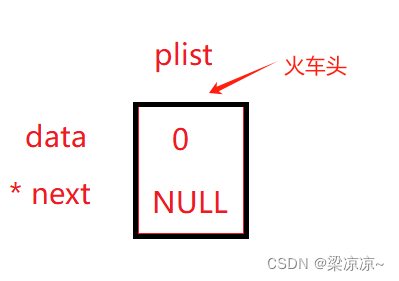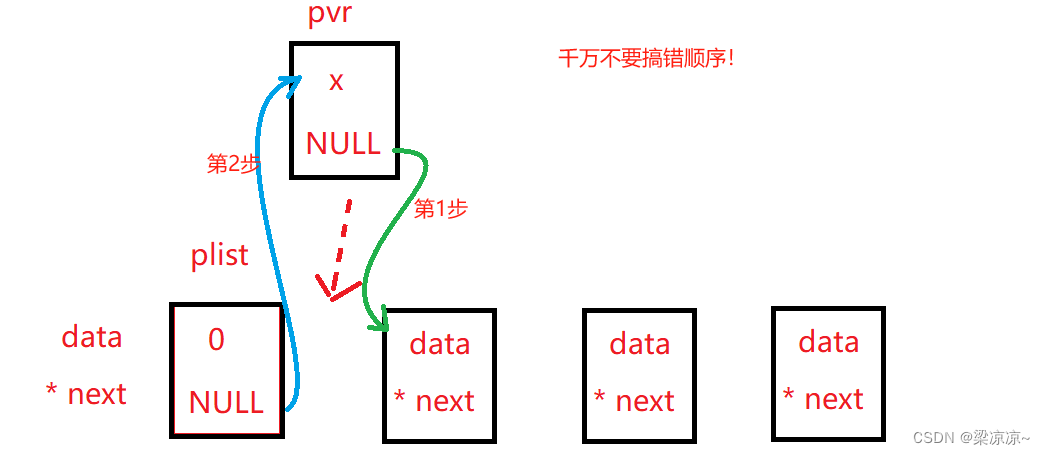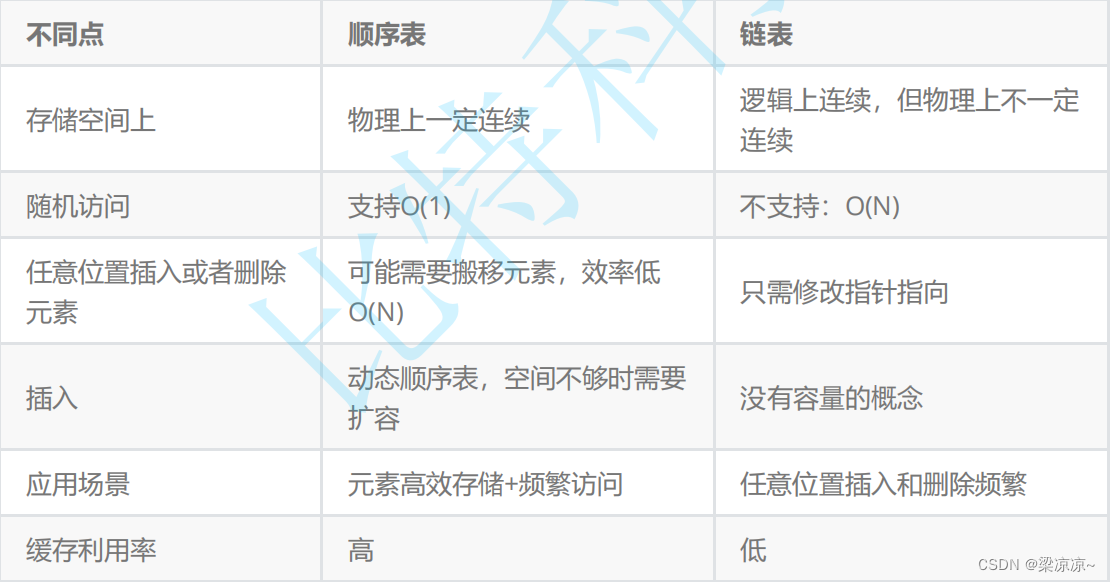- Spring Boot 启动报错解决:No active profil
- Kettle如何连接SQL Server和问题处理
- 「PHP系列」PHP 函数详解
- MySQL高可用解决方案――从主从复制到InnoDB Cluster架
- 【vue加载16秒优化到2秒】Vue3加载慢的性能优化,打包后页面静态
- 这里有份百度Create大会超长剧透,请查收!
- 【Rust】——Cargo工作空间
- 【猫头虎科技角】解决Mysqlcom.mysql.cj.jdbc.ex
- Nginx模块之rewrite模块
- 大数据 DataX-Web 详细安装教程
- 【Review+预测】测试架构演进的曲折之路
- 关于Node.js作为后端的入门教程
- vue3导入excel并解析excel数据渲染到表格中,纯前端实现。
- com.google.common.collect 是 Google
- slurm深度解析:探索作业调度系统的架构和术语
- 亮数据代理IP轻松解决爬虫数据采集痛点
- mysql如何自定义自增主键值,以及所遇到的不生效问题
- SpringBoot-打印请求的入参和出参
- 使用Node.js搭建服务器
- 解决使用Springboot jpa update数据时报错Execu
- Mybatis Plus 打印 SQL 语句(包含执行耗时)
- SpringBoot常用拦截器之ClientHttpRequestIn
- 解决SpringBoot日期序列化问题:[Java 8 datetim
- 【MyBatis Plus】初识 MyBatis Plus,在 Spr
- golang面试题大全
- Mysql 提升索引效率优化的八种方法
- 【LeetCode力扣】287.寻找重复数(中等)
- 深入浅出之Docker Compose详解
- 【Nginx】Nginx启动显示80端口占用问题的解决方案
- MySQL三表联合查询语法
1.链表的概念及结构
概念:链表是一种物理存储结构上非连续 、非顺序的存储结构,数据元素的逻辑顺序是通过链表 中的指针链接次序实现的 。 链表结构图如下: 链表的结构与火车的原理相同,火车是由火车头拉着一节一节的车厢而运动,链表也如此,创建链表结构的时候,通常使用一个指针指向下一个结构的地址,(双向链表需要额外创建一个指针,指向前一个节点)。
以带头节点不循环单向链表为例:
链表的结构与火车的原理相同,火车是由火车头拉着一节一节的车厢而运动,链表也如此,创建链表结构的时候,通常使用一个指针指向下一个结构的地址,(双向链表需要额外创建一个指针,指向前一个节点)。
以带头节点不循环单向链表为例:
typedef int SLTDateType; //先重命名一个类型声明,方便修改数据类型注意:typedef struct SListNode //定义链表结构体
{
SLTDateType data; //数据元素
struct SListNode* next; //这个为结构体指针,指向下一个结构体位置的指针
}SListNode; //结构体类型重命名为SListNode
(1)在图上可以看出,链式结构在逻辑上是连续的,但在物理上不一定连续。
(2)现实中的节点一般都是从堆上申请出来的。
(3) 从堆上申请的空间,是按照一定策略来分配的,两次申请的空间可能连续,也可能不连续。
2.链表的常用功能实现
2.1 初始化并创建带头节点(头节点不存储有效数据!)

SListNode* SListInit(){
SListNode* set = (SListNode*)malloc(sizeof(SListNode));
if (set == NULL) //避免malloc失败,
{
printf("malloc error...\n");
exit(-1);
}
set->data = 0; //该数据不是有效数据,可以忽略
set->next = NULL; //把下一个节点置空;
return set;
}
2.2 为了代码能够简洁些,我们可以添加一个动态申请节点的一个接口,方便插入。
// 动态申请一个节点
SListNode* BuySListNode(SLTDateType x)
{
SListNode* cur = (SListNode*)malloc(sizeof(SListNode));
if (cur == NULL)
{
perror("BuySListNode( ):error...");
exit(-1);
}
cur->data = x;
cur->next = NULL;
return cur; //创建一个结构体,并返回改结构体地址
}
2.3 单链表的头插

void SListPushFront(SListNode* pplist, SLTDateType x) //x:插入的数据
{
assert(pplist); //断言一下pplist,防止为空;
SListNode* pvr = BuySListNode(x); //动态申请一个节点
pvr->next = pplist->next;
pplist->next = pvr;
}
2.4单链表头删
void SListPopFront(SListNode* pplist) //该函数同理,把next指针的方向搞清楚
{
assert(pplist);
SListNode* cur = pplist->next;
pplist->next = cur->next;
free(cur);
cur = NULL;
}
2.5 单链表尾插

void SListPushBack(SListNode* pplist, SLTDateType x)
{
assert(pplist);
SListNode* pvr = BuySListNode(x);
SListNode* nex = pplist;
while (nex->next!=NULL) //循环走到最后一个位置,
{
nex = nex->next;
}
nex->next = pvr;
}
2.6 单链表的尾删
void SListPopBack(SListNode* pplist) //与上面尾插一样,
{
assert(pplist);
SListNode* cur = pplist;
while (cur->next->next) //走到最后倒数第二个位置
{
cur = cur->next;
}
free(cur->next); //free最后一个位置
cur->next = NULL; //把cur置空;完成尾删
}
2.7单链表查找
SListNode* SListFind(SListNode* plist, SLTDateType x)
{
SListNode* tmp = plist->next; //单链表查找的话,只能遍历一遍链表
while (tmp)
{
if (tmp->data == x) //如果找到x,就返回tmp指针
return tmp;
tmp = tmp->next;
}
return NULL; //没找到就返回空值
2.8单链表的销毁
void SLTDestroy(SListNode* pphead)
{
SListNode* cur = pphead;
while (cur)
{
SListNode* next = cur->next; //保存cur下一个指针
free(cur); //free掉cur指向的位置;
cur = next;
} //循环直至cur为空为止;
pphead->next = NULL;
}
3 顺序表与链表的区别

上一篇:【算法Hot100系列】旋转图像














